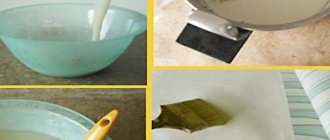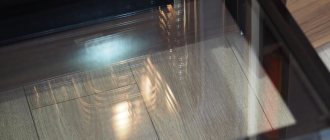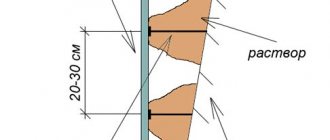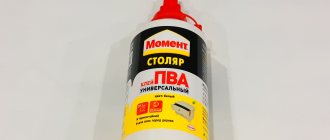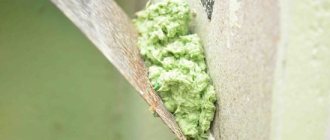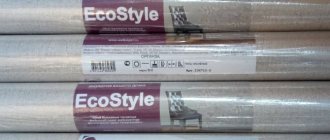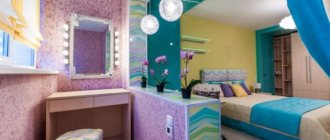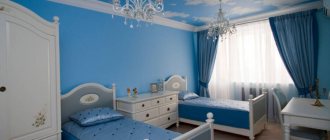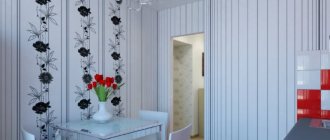Modern household chemicals seem to have already covered all aspects of repair and creativity, so there is no need for people to prepare glue with their own hands. However, there are situations when it is better to work with glue whose ingredients are known, natural and hypoallergenic. Let's figure out how to make a paste from flour so that a child prone to allergies can use it. Such glue should not only be safe, but ideally edible. Naturally, in terms of adhesive abilities it should not be inferior to industrial analogues.
What it is
Paste is a homemade gelatinous adhesive. The composition is used in needlework and, less often, in repairs (mainly for wallpapering). It contains no harmful additives, which cannot be said about industrial products. It is thanks to safety that the paste is still relevant. It replaces PVA well.
What are the advantages of making and using paste for modern people:
- This is an environmentally friendly product. All stages of preparation are traced. You can be sure that the composition is safe, unlike what the chemical industry offers.
- Paste replaces expensive glues, its cost is very low, in fact, it is equal to the cost of flour or starch.
- Easy to prepare, products are available at any time.
- Practical and easy to use composition.
- If you need to remove wallpaper glued to paste, it will not be difficult: just wet the walls, and the coating will come off without leaving a trace.
One of the disadvantages is the short shelf life. At room temperature it should be used within 24 hours. If you put it in the refrigerator, it will stay there for 2-3 days, but it will still spoil and you will have to throw it away.
To prepare the paste, a minimum of products are used: ordinary wheat / rye flour or starch. To make the composition as convenient as possible for use, you need to adhere to some principles in choosing components and tools:
- Flour is chosen of low quality. It is this product that gives the adhesive mass the necessary viscosity. Flour of the highest grade will not provide the glue with the required consistency.
- Before use, sift the flour through a sieve to remove lumps.
- In order for the mass to mix well, you will need a mixer or blender. But it is permissible to stir with a metal spoon - the main thing is that there are no lumps.
- The pan or basin is non-stick.
Summarize
We agree that today it is not difficult to purchase an adhesive composition for wallpapering. You can find everything for any type of wall covering. But many are faced with the fact that there is no way to buy glue, and the work is not finished, and it needs to be completed. And in such cases, preparing an adhesive emulsion yourself is a real salvation and the most worthy way out of the situation. We recommend that you read the review: is it possible to glue wallpaper onto wallpaper?
Home cooking has positive qualities:
- low price.
- the glue does not soak the paper, so wallpaper of even the smallest thickness will not deteriorate or be damaged during gluing.
- the best indicator of adhesion to different types of surfaces.
- no stains or marks after drying.
- The composition is durable after hardening.
- Removing wallpaper that is glued with this type of glue is very easy.
We told you all the details of creating a homemade adhesive composition, we hope that the information is useful to you.
Cooking rules
To prepare the paste, it needs to be boiled. To do this, make a paste-like mixture of flour and water, place it on the stove and heat it over low heat until all the lumps disappear.
Rules for preparing the paste:
- The water is heated on the stove.
- Add flour in a thin stream and stir quickly to obtain a more or less homogeneous consistency.
- The approximate ratio of the bulk component and water is from 1:2 to 1:8.
- The process must be closely monitored so that the mixture does not burn.
- The composition should be cooked over minimal heat.
- During the cooking process, the paste is stirred with a wooden spatula.
- Ready-made hot glue is not used in this work. It needs to be cooled first.
Advice! To ensure that the glue does not burn, it is recommended to cook it in a water bath, but the process will take longer - from 15 to 20 minutes.
Wallpaper paste
When preparing homemade wallpaper glue, you need to follow the instructions to ensure the composition is of the proper quality.
Step-by-step recipe for making paste:
- Sift a glass of flour so that there are no lumps left.
- Add cold water in small portions, stirring continuously. You need to achieve the consistency of thick sour cream.
- Stir the solution thoroughly until all visible lumps dissolve.
- Now you should add water and bring the total volume of the mixture to 1 liter. If it turns out too thick, you can add a little more water, but this time hot.
- Add 0.5 tbsp to the mixture. PVA glue, mix everything thoroughly. This component will provide viscosity and quick setting.
- An alternative additive is wood glue. It will help when gluing painted walls.
- Place the pan with glue on low heat and cook until bubbles appear.
- Now you need to remove the dishes from the heat and stir all the lumps. It doesn’t hurt to filter the composition through gauze folded in several layers - it is important to be careful not to get burned.
- The paste is ready. It should be gelatinous and transparent. All that remains is to cool it and use it for its intended purpose as regular wallpaper glue.
- If a film forms on the surface, it must be removed.
Advice! Let the paste cool naturally, do not put it in the refrigerator.
Using homemade wallpaper glue
You have already learned how to make wallpaper paste. Now let's talk about its application. Since nowadays there is a huge selection of branded adhesives, the use of paste is not very popular. Many are afraid to use it, but this is not entirely justified. I would like to note the fact that this homemade adhesive is perfect for most existing wallpaper. These can be either ordinary paper or more durable types, vinyl-based, non-woven and even photo wallpaper and glass wallpaper.
How to make wallpaper paste yourself
Before you start wallpapering, you need to take care of the tools. Here is the required list:
- Bucket for storing adhesive mixture
- Macrowitz or roller
- Several small rags
- Blade trimming knife
- Tape measure and pencil
Many people say that glue is only applied to the wall. But this is not so, some types of wallpaper begin to swell and cover the canvas with bubbles, so I recommend that you always apply glue to both the wall and the wallpaper. Further actions are no different from using store-bought glue.
- DIY wallpaper glue made from flour (photo and video)
- Photo instructions on how to make homemade glue with your own hands.
- Pour flour into a bowl.
- Pour a glass of water and stir.
After obtaining a homogeneous mass, put it on the fire for 10 minutes, pour out the rest of the water. Your paste is ready, be sure to cool it. A visual video tutorial on how to cook paste, share the wallpaper here.
Composition for creativity
For papier-mâché work, gluing crafts, creating appliques and other creative purposes, it is very easy to prepare good glue at home.
How to make such a composition:
- Place 1 cup of rye or wheat flour on the bottom of the pan.
- Pour in 1 glass of water and stir with a mixer.
- Gradually add 2 more glasses of water. The mass is stirred, you need to get rid of lumps.
- The pan is placed on the stove. The mixture is brought to a boil over low heat.
- Immediately after boiling, the container must be removed from the stove.
- Before use, you must wait until the glue has cooled completely.
This composition is stored in sealed glass containers for up to 2 days. Paper products fastened with such paste will hold firmly.
Pros: savings and more
Due to the fact that today there is a truly huge selection of materials for finishing, repair and construction on the market, there are no problems with choosing wallpaper glue. However, time brings its own adjustments, and with the advent of the economic crisis, many people have a logical desire: to save money. How to make a paste for wallpapering, making it yourself at home, using such simple and affordable materials as ordinary flour and starch? Let's figure it out.
Despite the apparent difficulties, making paste with your own hands is quite possible.
Attention! In addition to saving money, wallpaper paste has another significant advantage, which is why it has always been and remains a very popular adhesive composition. Sometimes we are faced with the need for urgent repairs: we need to re-glue loose sheets or simply make minor cosmetic repairs. It often turns out that there is no time to visit a hardware store. Or, as an option, a person can live in remote areas, in a country house or in a village, where there are not always shops of the appropriate profile. At such moments, it is a simple paste that will come to your aid!
The starch is sifted using a sieve or colander.
What other advantages speak in favor of the decision to use this simple but very effective glue? Let's get a look:
- Under its influence, most wallpapers do not get wet, which leads to safer gluing (wallpapers do not tear or deform).
- Of course, an important advantage is the low final price of the paste. In fact, the main components are starch and flour, which are sold in any store and are inexpensive. In addition to them, you will need water, which is, if not free, then close to it.
- If necessary, you can easily peel off wallpaper that was glued using this adhesive. You just need to moisten the surface of the wall with warm water, wait a while, after which you can dismantle the coating without any problems.
- It adheres perfectly to most surfaces used in interior decoration, especially when it comes to paint. Not every glue (even expensive) can boast such a level of adhesion.
- Long service life, during which your wallpaper will be securely glued to the wall surface.
- Versatility, thanks to which the paste can be used to glue almost all types of wallpaper presented in construction and finishing materials stores.
- No marks or stains that need to be removed. This cannot be said about some other types of wallpaper adhesives with similar characteristics.
Note! Despite the obvious and numerous advantages, the paste also has some disadvantages. The most obvious disadvantage of this composition is its not the best moisture resistance. At the same time, there are a number of ways in which it is possible to significantly increase the resistance of the paste to moisture. For example, you can mix ordinary wood glue, also commonly known as PVA, into the composition (5% of the volume of the paste should be enough.
Starch paste
Instead of flour, potato starch is also used to create a paste. The starch-based composition has the same strength, and the method of its preparation is similar to the previous ones:
- In 10 tbsp. dilute water with 1 tbsp. starch and stir thoroughly.
- Add another 0.5 tbsp. water, stir the lumps.
- If it is too thick, dilute with a small amount of hot water.
- The mixture is simmered over low heat until it boils.
- Cooled starch paste can be used after 10 hours.
How to make store-bought glue correctly
| Illustrations | Cooking instructions |
| Mix the dry mixture . We fill a plastic bucket with cold water according to the instructions and begin to mix it. Gradually pour the contents of the package into the water, without stopping stirring. | |
| Set aside and dilute . After the solution reaches the optimal consistency, let it sit for 10 minutes. If after this period the glue thickens too much, you can add a small amount of water and place it again. The finished mixture should be uniformly plastic, without lumps. | |
| Close for storage . If the use of the prepared solution is planned for later, close the bucket with a tight lid or, as shown in the photo, cover it with cellophane film. |
On a note
Making glue at home is a simple task, but you also need to apply it correctly. These tips will help you weld and use the paste as efficiently as possible:
- The paste is consumed within one day, no longer, as it sours quickly.
- The substance is not used for gluing thick and high-quality wallpaper. His expertise is medium-density paper wallpaper.
- Paste, especially from rye flour, is not recommended for overtly thin or light-colored wallpaper, as it can leave yellow spots that will show through.
- To make a paste that repels insects, add a little karbofos to it.
- In heat, the paste loses its characteristics. It should be stored in a cool place or at room temperature (+18-20˚ C).
- The composition must be prepared immediately before use. Maximum adhesive properties are revealed at a paste temperature of 40 degrees.
- Corn starch is often used instead of potato starch. The result is just as great.
Paste is a worthy analogue of modern adhesives. Its main advantages are safety for humans and low cost. Anyone can cook paste, this is another plus. Using homemade glue simplifies life in many ways: it saves money and protects against poisoning. The paste is good for both repairs and creativity.
